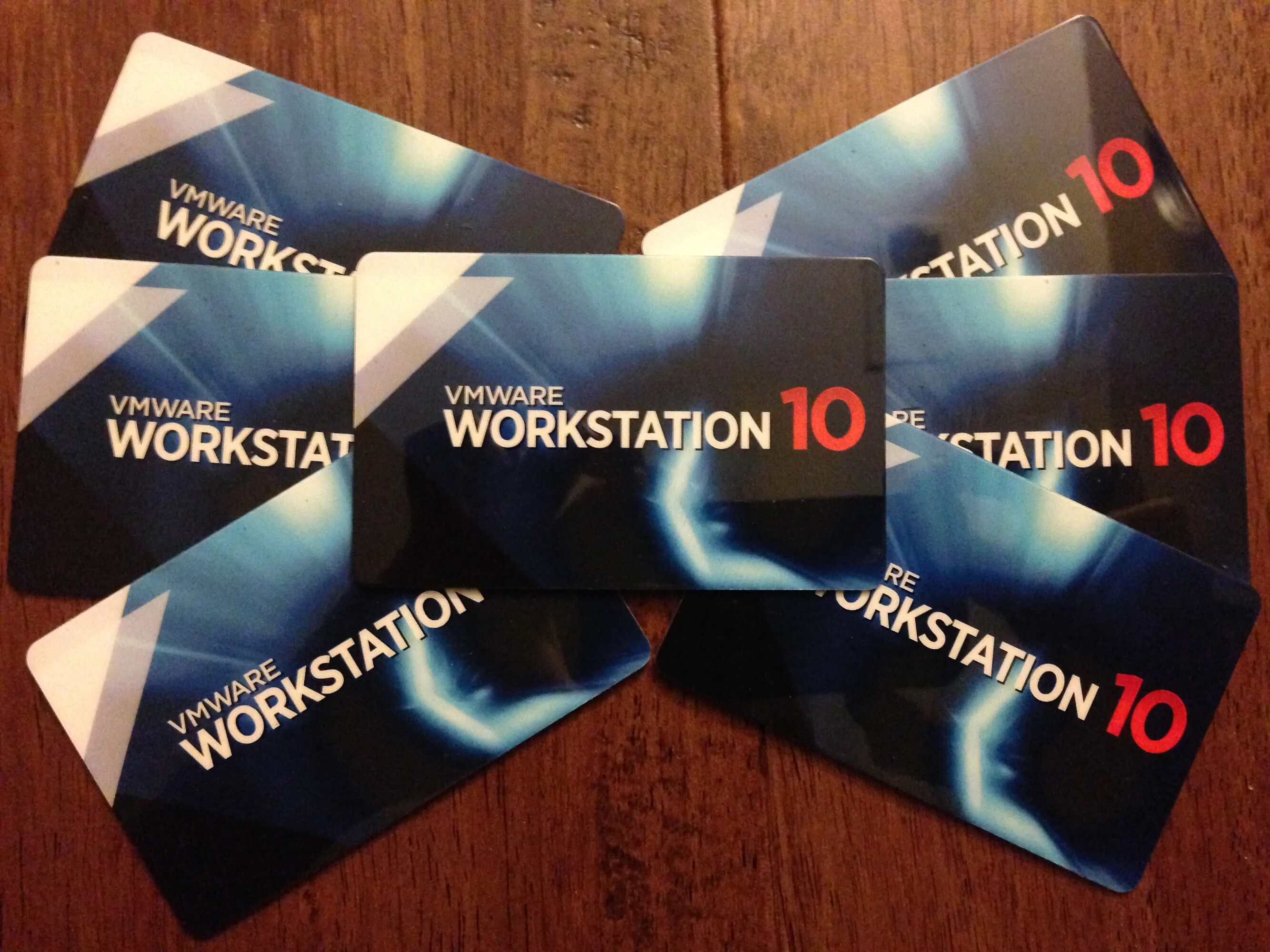Introduction
Transferring VMware Workstation to another drive is a task that may be necessary for various reasons. Whether you’re running out of storage space on your current drive, upgrading to a faster or larger drive, or simply want to reorganize your virtual machine files, this process allows you to seamlessly relocate your VMware Workstation setup.
VMware Workstation is a virtualization software that enables users to run multiple operating systems on a single machine. This powerful tool is favored by developers, IT professionals, and enthusiasts alike for its ability to create and manage virtual machines efficiently.
In this article, we will explore several methods to transfer VMware Workstation to another drive. Each method has its own advantages and considerations, so it’s important to choose the one that best fits your needs.
Before we dive into the details, it’s worth noting that transferring VMware Workstation requires some technical knowledge and basic understanding of virtual machines. It’s always recommended to backup your virtual machines and important data before proceeding with any changes to ensure the safety of your files.
In the following sections, we will discuss the reasons to transfer VMware Workstation to another drive and guide you through the steps for each method. By the end of this article, you will have a clear understanding of how to successfully transfer your VMware Workstation setup to a new drive.
Reasons to Transfer VMware Workstation to Another Drive
There are several reasons why you might need to transfer your VMware Workstation to another drive. Let’s explore some of the key scenarios where this task becomes necessary:
- Insufficient storage space: As virtual machines consume significant amounts of disk space, you may find yourself running out of storage on your current drive. Transferring VMware Workstation to a larger drive allows you to continue creating and running virtual machines without worrying about storage limitations.
- Drive upgrade: Upgrading to a faster or larger drive can greatly enhance the performance and capacity of your VMware Workstation environment. Moving your setup to the new drive ensures that you can take full advantage of the improved hardware capabilities.
- File organization: Over time, your virtual machine files may become scattered across different drives, making it difficult to manage and locate them. Transferring VMware Workstation to another drive allows you to consolidate and organize all your virtual machines in one place for easier accessibility.
- Backup and recovery: By transferring VMware Workstation to another drive, you can create a backup of your virtual machines and important data. This provides an additional layer of protection, allowing you to restore your setup in case of system failures or data loss.
- Separation of system and data: If you currently have your virtual machines and data stored on the same drive, it may be beneficial to transfer VMware Workstation to another drive to separate the system files from the data files. This separation can improve performance, enhance organization, and simplify backups.
Regardless of the reasons for transferring VMware Workstation to another drive, it’s crucial to plan and execute the process carefully to avoid any potential data loss or disruptions to your virtual machine environment. Now that we understand why this task is necessary, let’s proceed to the next section, where we will discuss the preparatory steps before transferring VMware Workstation.
Preparing for the Transfer
Before you start transferring VMware Workstation to another drive, there are a few important steps you should take to ensure a smooth and successful transition. These preparatory steps will help safeguard your virtual machines and minimize the risk of data loss or unexpected issues. Here’s what you need to do:
- Backup your virtual machines: It’s crucial to create a backup of all your virtual machines and important data before proceeding with the transfer. This will serve as a safety net in case something goes wrong during the process. You can use VMware’s built-in backup tools or manually copy the virtual machine files to an external storage device.
- Check disk space: Make sure the destination drive where you plan to transfer VMware Workstation has sufficient free space to accommodate your virtual machines. Take into account the size of each virtual machine and any future expansion you may anticipate.
- Review system requirements: Verify that your new drive meets the system requirements for VMware Workstation. Check for compatibility issues, such as the file system and available storage interfaces, to ensure smooth operation.
- Close all running virtual machines: Before initiating the transfer, close all virtual machines and ensure that VMware Workstation is not actively using any of the files on the source drive. This will prevent any conflicts or data corruption during the transfer process.
- Consider network connections: If your virtual machines rely on network connections, ensure that the IP addresses and network settings remain intact after the transfer. Update any configurations if necessary to ensure seamless connectivity.
- Document your virtual machine settings: Make a note of any custom settings, configurations, or network configurations for each virtual machine. This documentation will come in handy during and after the transfer process, helping you recreate the environment on the new drive.
By following these preparatory steps, you can minimize the potential risks and ensure a successful transfer of VMware Workstation to another drive. With your virtual machines backed up and the necessary precautions taken, you are now ready to explore the different methods available for transferring VMware Workstation. In the following sections, we will discuss each method in detail, providing step-by-step instructions for a seamless transition.
Method 1: Using the VMware vCenter Converter Standalone
One of the easiest and most reliable methods to transfer VMware Workstation to another drive is by using the VMware vCenter Converter Standalone tool. This tool allows you to convert and transfer your virtual machines to a different location without the need for complex manual steps. Here’s how you can use the VMware vCenter Converter Standalone:
- Download and install VMware vCenter Converter Standalone: Start by downloading the VMware vCenter Converter Standalone tool from the official VMware website. Install the tool on the machine where VMware Workstation is currently installed.
- Launch the VMware vCenter Converter Standalone: Once the installation is complete, launch the VMware vCenter Converter Standalone tool from your Start menu or desktop shortcut.
- Select the source: In the VMware vCenter Converter Standalone, select “Convert machine” to start the conversion wizard. Choose the “Powered off” option and browse for the source virtual machine that you want to transfer.
- Configure the destination: Specify the destination as the new drive where you want to transfer VMware Workstation. You can choose a local drive or a network location. Ensure that you have sufficient storage space on the destination drive.
- Customize the conversion options: The converter tool offers various customization options such as choosing the virtual machine type, hardware compatibility, and network settings. Review and modify these options as desired.
- Start the conversion: Before starting the conversion process, review the summary that displays the details of your configuration. If everything looks correct, click “Finish” to begin the conversion.
- Monitor the conversion process: The VMware vCenter Converter Standalone tool will start converting and transferring your virtual machine to the new destination drive. Monitor the progress and ensure that no errors or interruptions occur.
- Verify and test the transferred virtual machine: Once the conversion is complete, verify that the virtual machine has been successfully transferred to the new drive. Start VMware Workstation and browse for the virtual machine on the new drive. Power it on and test its functionality.
Using the VMware vCenter Converter Standalone tool simplifies the process of transferring VMware Workstation to another drive. It automates most of the tasks and ensures a smooth transition without requiring advanced technical skills. However, it’s essential to carefully review and validate the converted virtual machine on the new drive to ensure its integrity and compatibility.
Method 2: Manually Moving the Virtual Machine Files
If you prefer a more hands-on approach, you can transfer VMware Workstation to another drive by manually moving the virtual machine files. This method gives you more control over the process and allows you to customize the file organization on the new drive. Here’s how you can manually move the virtual machine files:
- Open VMware Workstation: Start by opening VMware Workstation and ensuring that all virtual machines are powered off and not in use.
- Locate the virtual machine files: Navigate to the current location of the virtual machine files. By default, this is usually in the “Documents\Virtual Machines” or “My Documents\Virtual Machines” folder. Note the complete path of the virtual machine files.
- Create a new folder on the destination drive: On the new drive where you want to transfer VMware Workstation, create a new folder to store the virtual machine files.
- Copy the virtual machine files: Copy all the files and folders associated with the virtual machine from the current location to the newly created folder on the destination drive. Ensure that you maintain the directory structure and file relationships.
- Edit the virtual machine configuration file: Open the virtual machine configuration file (with the .vmx extension) in a text editor. Update the file paths to reflect the new location of the virtual machine files on the destination drive.
- Save and close the configuration file: After updating the file paths, save the changes to the virtual machine configuration file and close the text editor.
- Open the virtual machine: In VMware Workstation, go to “File” > “Open” and browse for the virtual machine configuration file located in the new destination drive folder. Select the file and click “Open” to load the virtual machine.
- Test the transferred virtual machine: Power on the virtual machine and ensure that it starts up without any issues. Verify that all the applications and settings are intact.
Manually moving the virtual machine files gives you flexibility in organizing and customizing the file structure on the new drive. However, it requires careful attention to detail to ensure that all file dependencies and paths are correctly updated in the virtual machine configuration file. Verifying the functionality and integrity of the transferred virtual machine is vital to ensure a successful transfer.
Method 3: Using the VMware vSphere Storage vMotion
If you have access to VMware vSphere and a compatible storage infrastructure, you can transfer VMware Workstation to another drive using the VMware vSphere Storage vMotion feature. This method allows you to move the virtual machine files while keeping the virtual machine running, minimizing downtime. Here’s how you can use the VMware vSphere Storage vMotion:
- Ensure vSphere compatibility: Confirm that your VMware Workstation virtual machines are compatible with the vSphere infrastructure. The vSphere version should support the vMotion feature and have shared storage available.
- Connect to vCenter Server: Open the vSphere Client or vSphere Web Client and connect to the vCenter Server that manages your VMware virtual machines.
- Select the virtual machine: Locate the virtual machine that you want to transfer and ensure it is powered on.
- Initiate the vMotion wizard: Right-click on the virtual machine and select “Migrate” or “Migrate VM” to start the vMotion wizard.
- Choose the migration type: In the vMotion wizard, select the “Change storage” option to migrate the virtual machine to a different datastore while it’s running.
- Select the destination datastore: Choose the desired datastore on the new drive where you want to transfer VMware Workstation.
- Specify migration options: Configure any additional migration options, such as virtual machine disk format, network mapping, and resource allocations.
- Review and confirm the migration: Review the migration settings and ensure everything is configured correctly. Then click “Finish” to start the vMotion process.
- Monitor the vMotion progress: Monitor the vMotion process to ensure that the virtual machine files are being transferred to the new datastore without any errors or interruptions.
- Validate the transferred virtual machine: Once the migration is complete, validate that the virtual machine has been successfully transferred to the new drive. Power on the virtual machine and test its functionality.
Using the VMware vSphere Storage vMotion feature offers a seamless and efficient method to transfer VMware Workstation to another drive, especially in enterprise environments with vSphere infrastructure. The ability to migrate virtual machines while they’re running minimizes disruption and downtime. However, it’s crucial to ensure that your vSphere environment meets the requirements and that both the source and destination storage are properly configured and accessible.
Method 4: Using the VMware OVF Tool
If you’re looking for a versatile method to transfer VMware Workstation to another drive, the VMware OVF Tool is a powerful option. This command-line tool allows you to export your virtual machine as an Open Virtualization Format (OVF) package, which can then be imported onto a new drive. Here’s how you can use the VMware OVF Tool:
- Download and install the VMware OVF Tool: Start by downloading the VMware OVF Tool from the official VMware website. Install the tool on the machine where VMware Workstation is currently installed.
- Open a command prompt: Launch a command prompt or terminal on your computer.
- Navigate to the OVF Tool directory: Using the command prompt, navigate to the directory where the VMware OVF Tool is installed. This is typically the installation directory or a directory specified during installation.
- Export the virtual machine: Use the command-line syntax to export your virtual machine as an OVF package. The command typically looks like this:
bash
ovftool.exe –acceptAllEulas [path_to_source_vm.vmx] [path_to_destination_folder/destination_file.ovf]
- Specify the source and destination: Replace `[path_to_source_vm.vmx]` with the complete file path to the source virtual machine’s .vmx file. Replace `[path_to_destination_folder/destination_file.ovf]` with the desired location and name of the destination OVF file.
- Initiate the export: Press Enter to start the export process. The VMware OVF Tool will begin converting your virtual machine into an OVF package and save it to the specified destination.
- Copy the OVF package to the new drive: Once the export is complete, copy the resulting OVF package to the new drive where you want to transfer VMware Workstation.
- Import the virtual machine: In VMware Workstation, go to “File” > “Import” and browse for the OVF package file located in the new drive. Select the file and follow the import wizard to load the virtual machine onto the new drive.
- Test the transferred virtual machine: Power on the virtual machine and verify that it starts up without any issues. Test its functionality and ensure that all applications and settings are intact.
Using the VMware OVF Tool provides a flexible and reliable method to transfer VMware Workstation to another drive. The ability to export and import virtual machines in the OVF format ensures compatibility across different platforms and versions. While the command-line interface may require some familiarity, the VMware OVF Tool offers extensive documentation and support to assist you throughout the process.
Conclusion
Transferring VMware Workstation to another drive is a task that may be necessary to address storage limitations, upgrade hardware, or reorganize virtual machine files. In this article, we explored four different methods to transfer VMware Workstation to another drive: using the VMware vCenter Converter Standalone, manually moving the virtual machine files, utilizing the VMware vSphere Storage vMotion, and leveraging the VMware OVF Tool.
The choice of method depends on your specific requirements, technical expertise, and available resources. The VMware vCenter Converter Standalone offers an easy-to-use tool that allows for automated conversion and transfer, while manually moving the virtual machine files provides more control over the process. The VMware vSphere Storage vMotion is a viable option if you have access to vSphere infrastructure, and the VMware OVF Tool enables exporting and importing virtual machines in the OVF format.
Before initiating any method, it’s essential to prepare for the transfer by backing up virtual machines, checking disk space, reviewing system requirements, and documenting virtual machine settings. These preparatory steps minimize the risk of data loss and help ensure a smooth transfer process.
Regardless of the method chosen, it’s crucial to validate the transferred virtual machine on the new drive by powering it on and testing its functionality. This step ensures that the transfer was successful and that all applications and settings are intact.
By following the methods and best practices outlined in this article, you can confidently transfer VMware Workstation to another drive, enabling you to optimize storage, improve performance, and manage your virtual machine environment effectively.

























